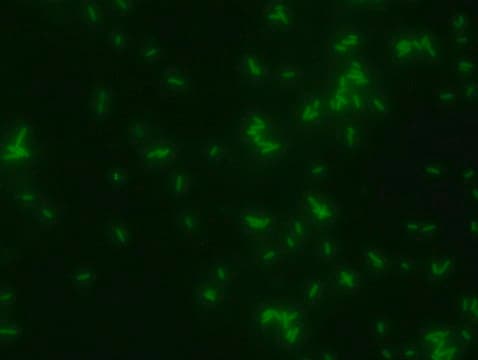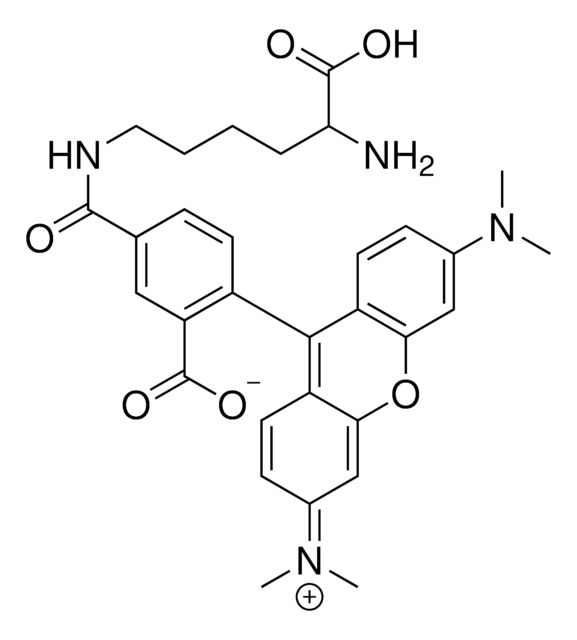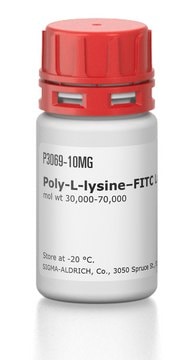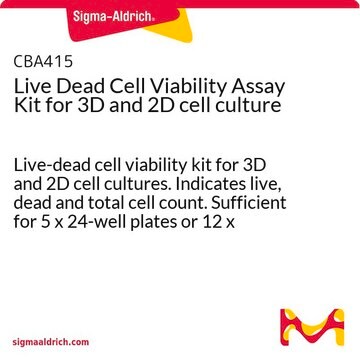SBR00050
FITC Labeled D-Lysine
Suitable for bacterial labeling
Sinonimo/i:
FADL, FDAA
Scegli un formato
Scegli un formato
About This Item
Prodotti consigliati
Livello qualitativo
Temperatura di conservazione
−20°C
Descrizione generale
Applicazioni
- Bacterial cell wall morphology
- Bacterial cell wall formation or remodeling activity
- Bacterial viability/activity
- Identify bacterial activity on surfaces or in substances
- Differentiation betweenvarious bacterial strains according to their incorporation profile of differentD amino acids and sugars
Risultati analitici
- Fluorescent microscopy application: Fluorescein Labeled D-Lysine has excitation/emission wavelength range at 495 nm/515 nm.
- The recommended working concentration in fluorescent microscopy imaging application is between 250μM-500 μM in DMSO.
- Aliquots of the DMSO solution can be stored at -20°C, protected from light for at least one month.
Codice della classe di stoccaggio
11 - Combustible Solids
Classe di pericolosità dell'acqua (WGK)
WGK 3
Punto d’infiammabilità (°F)
Not applicable
Punto d’infiammabilità (°C)
Not applicable
Scegli una delle versioni più recenti:
Certificati d'analisi (COA)
Non trovi la versione di tuo interesse?
Se hai bisogno di una versione specifica, puoi cercare il certificato tramite il numero di lotto.
Possiedi già questo prodotto?
I documenti relativi ai prodotti acquistati recentemente sono disponibili nell’Archivio dei documenti.
Filtri attivi
Il team dei nostri ricercatori vanta grande esperienza in tutte le aree della ricerca quali Life Science, scienza dei materiali, sintesi chimica, cromatografia, discipline analitiche, ecc..
Contatta l'Assistenza Tecnica.








